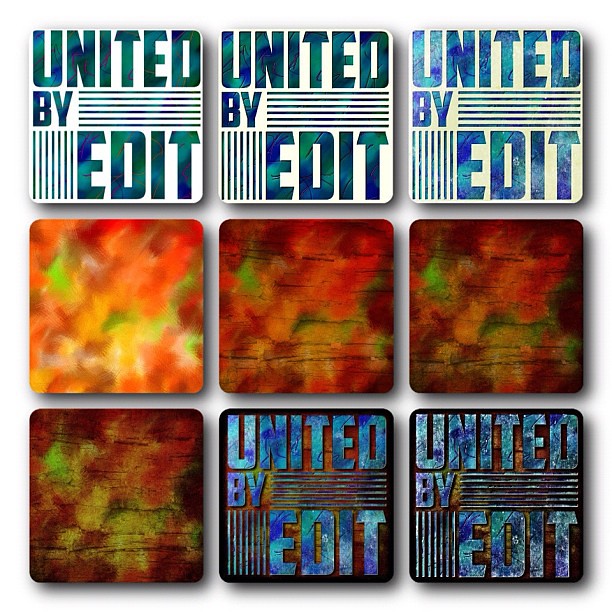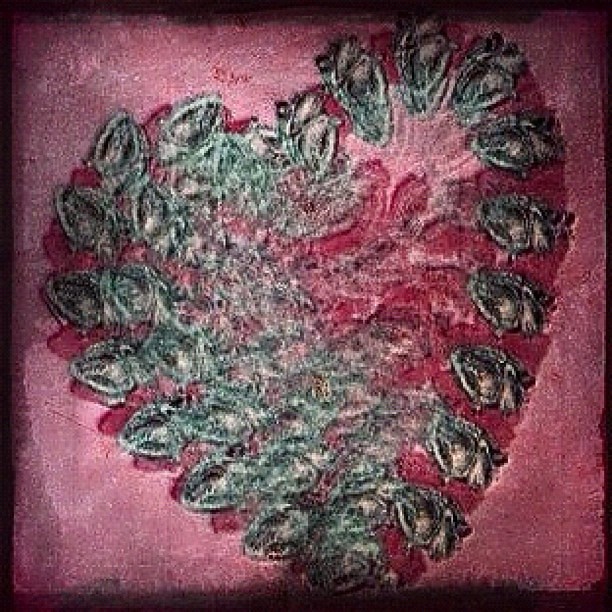
Last week I posted about my recent discovery of the folks making and sharing horror-themed pictures on Instagram. That group is still on my mind, apparently haunting the corners of my daily practice. As an extension of my prescient remix culture theme, this past week @horrorclub posted a picture to be used in a "challenge" titled #bloodstained_challenge1. The gist of these challenges is that you copy the prompting picture and rework it. Many challenges simply post regular highlights of participants' contributions. Some, like this one, create a mechanism for picking a winner from all the entries.

I would be lying if I claimed i was not interested in highlights and winning, but at least I try not to lead with that care. My primary interest is in the prompt and seeing how many different ways I can rework that opening picture. I also enjoy seeing what others do with it. But mostly, it's the combination of the assignment and the communal sharing that keeps me going.
There is something revealing in that observation: see, I've always thought I was a much better student than an academic. There comes a point in graduate school where you have to move beyond assignments and homework, but not the work. You have to start designing your own prompts, your own research projects. I found that transition hard; I still struggle with it. I've tried to formalize giving myself prompts, asking myself questions as if I was both teacher and student. It doesn't really work so well.

I'm not sure exactly what I get from an assignment prompt that I can't provide for myself. Alibi, maybe? In the case of these horror edits, I feel like both the sponsor and the group of folks contributing to the feed licenses some pretty dark stuff. If I were just doing this on my own, you might think I needed psychiatric help. Well, you probably still do. But in my head, my imagined you is less judgmental because I am not doing this alone. No, instead I've joined a creepy zombie cult of goth kids and misfits. So much better.
It is better, because those goth kids and misfits have got my back. We sneer at all of you squares and dweebs who "just don't get it." Again, not really. This is a psychological alibi. These are my hipster, imagined artist friends who hang out smoking id cigarettes by the dumpsters in back of the consciousness cafeteria.

Dark fantasies all around.
But so, horror is a comfort for me. I retreat to it, not for its violence and gore, but for its familiar formulas and the constant play of convention and invention in any genre. I love its playful yet sinister dare: go ahead, disbelieve this "hokum" -- you know what happens to the disbelievers. Again, not in real life -- well,
usually not in real life. That's the tension of possibility right there. That's the dance of "you're being silly and superstitious" with "maybe there really are monsters, this time."
Okay, while I'm on the confession train, here's another fact about me: I love graveyards. I love going to them at all hours of the day and night, including midnight and after. They are, to me, more peaceful and spiritual than churches or mountaintops. They are spaces to confront possibility, to walk the knife's edge between what is and what might be, to feel the tug of superstition and the supernatural at the edges of a mind struggling always to be rational. They are sites of honoring the departed, remembering that they matter, and confronting how little they actually stay with us. They are places to witness others' attempts to remember and honor the departed, to see that as a performance in regular need of refreshment. Wherever I have lived, I have always known where the nearest graveyard is and visit it regularly.

Graveyards are a kind of prompt, a kind of invitation. We go there to work our magic, to imagine so many possibilities, both dark and comforting. A faded epitaph is its own kind of writing assignment, waiting to be fleshed out. Fresh and withered flowers and wreaths are the tokens of others' offerings to the cemetery seminar. And each shadow is a theater where fantasy performs, sometimes sinister and sometimes serene.
You might worry about the darkness in my soul, but I promise it is balanced by light. My recent picture manipulations are more signs of joy than despair. These are the formulae, the incantations of possibility and a deep belief that myth matters. These monsters that go in and out of fashion never go away. Like prayers or angels, they remind us that there is something more all while teasing us that to think so is silly. Or is it?
And so we whistle, breath and melody, its own kind of prayer, walking a little more quickly or a little more slowly past sites of so much possibility.
























